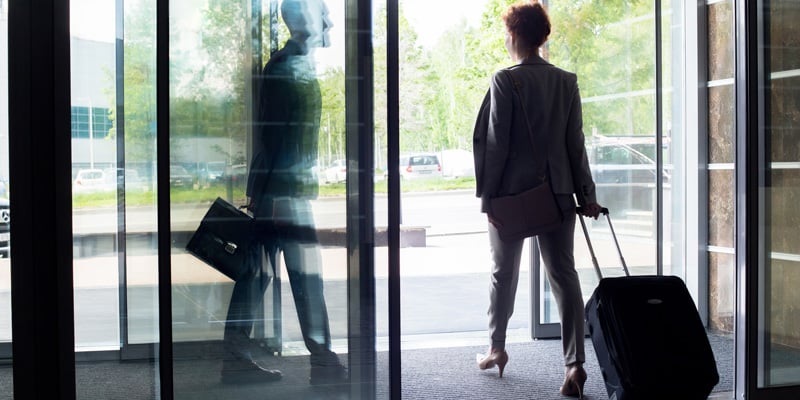
As tragic news headlines remind us of the importance of controlling who is able to enter our buildings, this may be a good time to evaluate the effectiveness of current entrance security measures.
An access card or fob is a common low-level security system for building access, requiring credentials to open a locked door. But how many times have each of us witnessed someone courteously holding the door open for the person behind them? This is referred to as tailgating, and the person who entered without having their identity verified is technically a security breach. That courteous action may have admitted an unwelcome or even dangerous individual into the building.
Physical barriers requiring each person to be individually granted access add a significant level of security, although tailgating can sometimes occur with these devices as well. Among the more basic equipment is a waist-high turnstile with a card reader. These turnstiles can be budget-friendly, but aren’t terribly secure because it’s not difficult to climb or jump over them. They are also typically narrow and unfriendly to wheelchairs or walkers, requiring the addition of a turnstile gate or “ADA gate”.
Newer advancement in waist-high turnstile designs resemble gate-style entry lanes, and are wide enough to accommodate a wheelchair or even a cart with packages. Wider passageways unfortunately leave room for two people to attempt to fit through at the same time – another form of tailgating called piggybacking. To address this, some entry lanes are equipped with sensors capable of detecting the number of people attempting to pass through and sounding an alarm when needed. Technology exists that can differentiate between people and packages, minimizing false alarms.
Full height turnstiles or gates are much more difficult to climb over or under, and are therefore a much stronger deterrent to unauthorized entry. This style of secured entrance can appear less welcoming or inviting, which is among the factors to consider when selecting a secured entry system. A full height revolving door turnstile, which looks similar to a revolving door but locks after each authorized entrant, may be a more inviting option. Piggybacking is still possible unless sensor technology or human monitoring is in place.
Where there is the need for extremely secure access control for applications such as data centers, mantrap doors or portals are often recommended. A mantrap is a vestibule with interlocking doors, wherein only one door will open at a time. Credentials are required before entering the space—sensors verify that only one person has entered—and biometrics such as facial recognition or fingerprint verify identity and allow the inner door to open.
Budgets, the quantity of people using an entrance, and the level of security required determine the best option for controlling entry to a building.
Contact a professional security integrator for more information.
